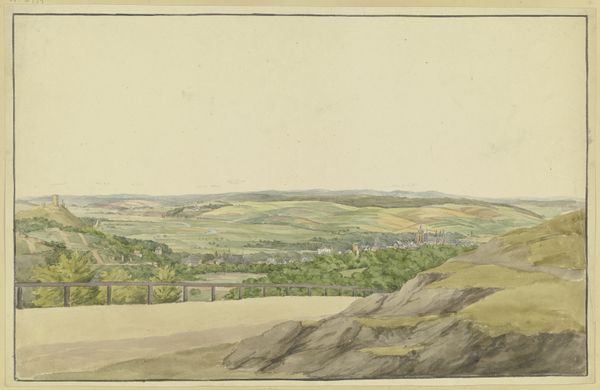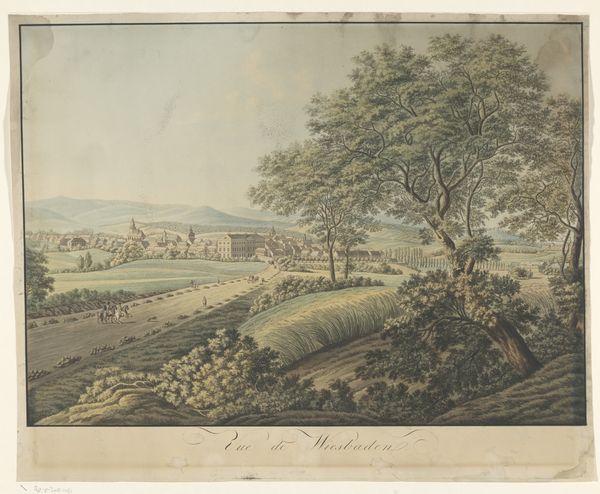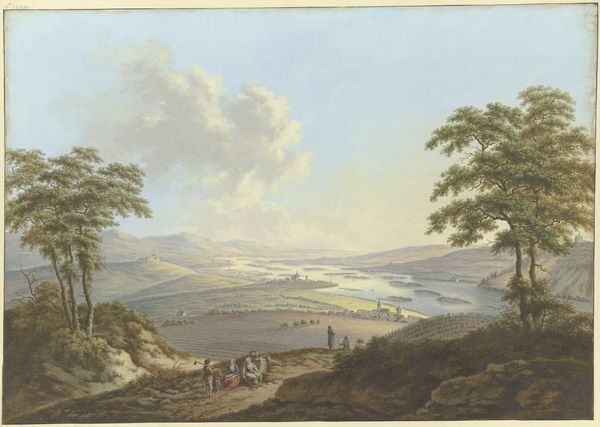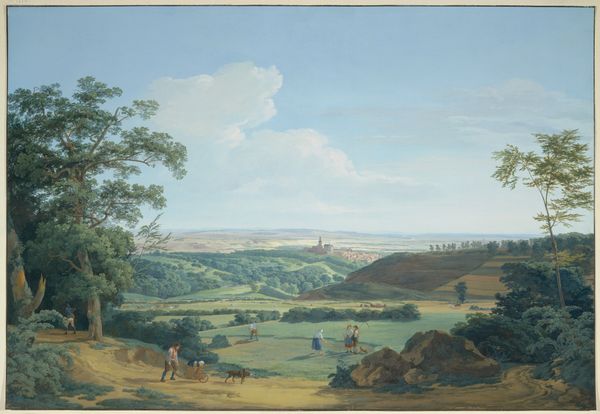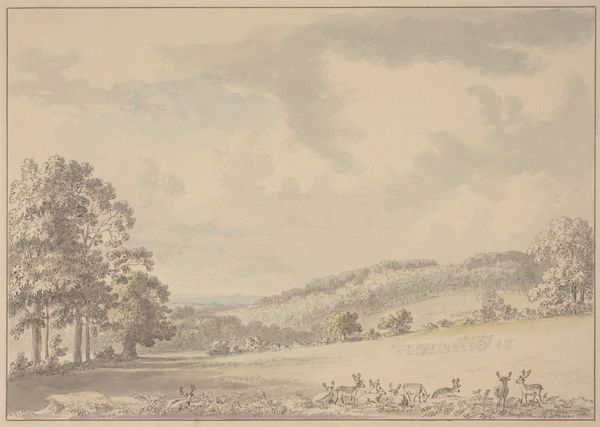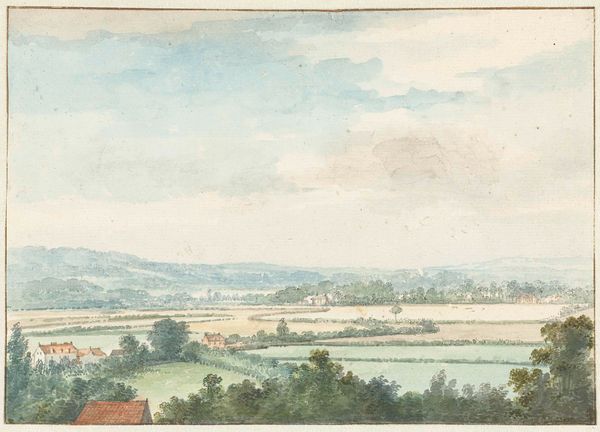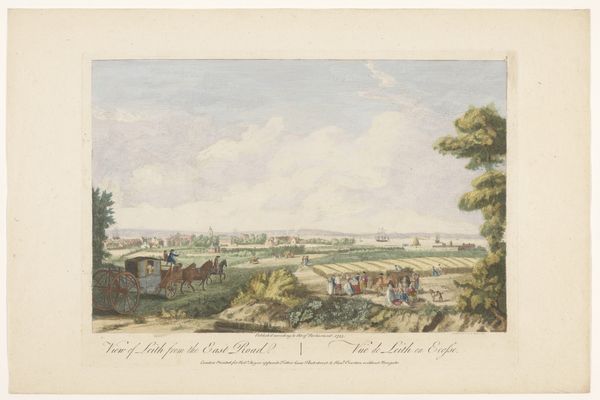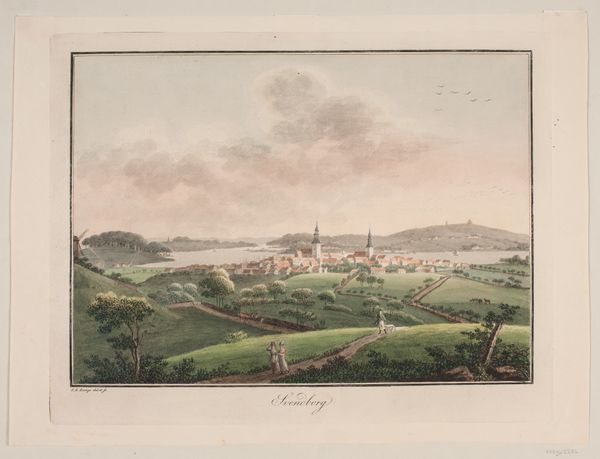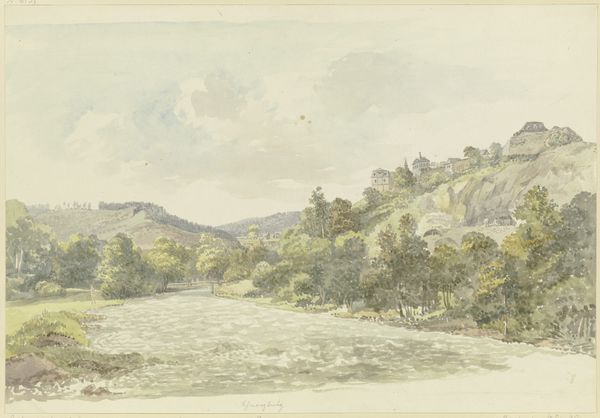
Blick von einer Anhöhe auf das Dorf St. Jakob bei Basel mit spitzem Kirchturm 1803
0:00
0:00
drawing, coloured-pencil, plein-air, paper, watercolor, ink
#
drawing
#
coloured-pencil
#
16_19th-century
#
plein-air
#
landscape
#
paper
#
watercolor
#
ink
#
coloured pencil
#
romanticism
#
watercolor
Copyright: Public Domain
Curator: This delicate landscape drawing offers us a tranquil view. It’s titled "View from a Height of Land on the Village of St. Jakob near Basel with Pointed Church Tower", created around 1803 by Marquard Wocher. The artist used watercolor, ink, and coloured pencil on paper. Editor: It feels so muted, almost pastel-like in its softness. I’m struck by how serene it is, a carefully composed scene that seems to almost deliberately exclude the grittiness of everyday life. Curator: That’s interesting. Given Wocher's context, it's likely an intentional choice. During this time, landscape painting provided a way to represent emerging national identities and ideals. How would the image have been perceived at the time, reflecting on political and social tensions? Editor: Right, but I also think the appeal of something like this, the almost naive quality of the artistry itself, resided in the sheer practicality and relative low-cost access of these material choices – pencil, watercolor, and ink – compared to the labour that oil-based artwork required, for instance. It makes it feel so approachable. It invites even amateur participation in art. Curator: Absolutely. Think about the role the Städel Museum itself plays. An artwork like this could be exhibited for many viewers. The romanticism prevalent is clearly at play, making accessible to the people both its rendering as its exhibition. What happens to our sense of landscape when made publicly and commonly accessible? Editor: It feels like he's showing the industrial process is unnecessary here – you only need what is found readily in the nature. Wocher uses very subtle strokes – the artist clearly delights in these mundane materials which allows for very close-range observation and, frankly, a kind of visual democratisation. The labour is minimized. It’s art, yes, but craft is visible in it too. Curator: That attention to materiality resonates with the painting's emphasis on the details of the landscape itself, creating a dialogue between nature and the tools used to depict it, almost becoming one. Considering all that you noticed from its colouration to labour process to its wider public exhibition context – how does it add depth? Editor: I think the most resonant for me will now be this contrast between the subtle means of art creation and that desire for such great artwork scale and public admiration, a new sort of celebrity emerging.
Comments
No comments
Be the first to comment and join the conversation on the ultimate creative platform.
